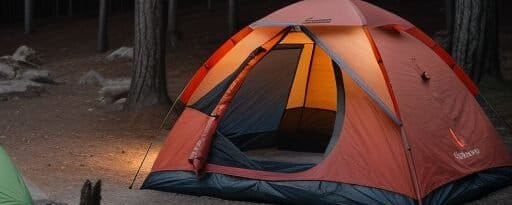How Many People RV Fulltime? The Growing Nomadic Lifestyle
Have you ever dreamed of selling your home, simplifying your life, and hitting the open road? You’re not alone. The full-time RVing lifestyle has exploded in popularity in recent years, with more Americans than ever choosing to make their recreational vehicles their permanent homes. But exactly how many full-time RVers are there, and what’s driving this nomadic revolution?

The Fulltime RV Population: By the Numbers
Pinpointing the exact number of permanent RV dwellers is challenging since manfull-timeme RVers move frequently and may not register as permanent residents in any single location. However, several sources provide valuable insights:
- According to the RV Industry Association (RVIA), approximately 1 million Americans full-time in their RVs.
- Census data is less precise but indicates between 500,000 to 1.5 million Americans consider their RV their primary residence.
- The Escapees RV Club, one of the largest organizations for full-time RVers, reports membership growth of over 10% annually since 2018, reflecting the lifestyle’s increasing popularity.
What’s particularly interesting is the growth rate of full-timeline living. Industry experts estimate the full-time RV community has grown by approximately 40-50% since 2019, with a significant surge during and after the pandemic.
Demographics: Who Are Fulltime RVers?
The stereotype of full-time RVers being primarily retirees is increasingly outdated. Today’s RV nomad community spans multiple demographics:
Retirees and Senior RVers
- Still represent about 40% of full-time RVers
- Typically travel in higher-end Class A motorhomes or fifth-wheels
- Often follow the “snowbird pattern” of wintering in southern states
Working-Age Digital Nomads
- Now comprise approximately 30-35% of the full-time RV population
- Typically aged 30-50
- Work remotely while traveling in their “RV office setup”
- Often choose smaller, more fuel-efficient “boondocking-friendly RVs”
Families with Children
- Represent about 10-15% of fulltime RVers
- Often referred to as “road schooling families” or full-time RV homeschoolers”
- Typically travel in larger fifth wheels or bunkhouse models
- Form tight-knit communities through organizations like “Fulltime Families”
Solo Travelers
- Approximately 15-20% of the full-time RV community
- Fastest-growing demographic, particularly “solo female RVers”
- Often choose smaller, more manageable rigs like Class B vans or small travel trailers
Why People Choose the Fulltime RV Lifestyle
The reasons for choosing permanent RV living have evolved considerably over the past decade:
Financial Considerations
- “RV living cost savings” is consistently cited as a top reason
- Average monthly expenses for full-time RVers range from $1,500-$3,000, significantly less than maintaining a traditional home in many areas
- “Affordable RV retirement” appeals to those with limited retirement savings
Freedom and Flexibility
- The ability to change location based on “best RV weather seasons”
- No yard maintenance, HOA fees, or property taxes
- The “minimalist RV lifestyle” appeals to those seeking to simplify
Remote Work Opportunities
- The rise of “RV internet solutions” has made working from anywhere feasible
- Many companies now hire “location-independent employees”
- Emergence of “RV coworking communities” in popular destinations
Health and Wellness
- Many report improved health from more time outdoors
- “RV mental health benefits” include reduced stress and increased happening activation lifestyle with more hiking, biking, and exploring
Challenges of the Fulltime RV Lifestyle
Despite its appeal, permanent RV dwelling comes with unique challenges:
Finding Places to Stay
- Increasing competition for “monthly RV sites”
- Rising prices at popular “long-term RV parks”
- Restrictions on “extended RV parking” in many areas
Legal and Practical Considerations
- “Fulltime RV domicile states” (South Dakota, Florida, and Texas remain most popular)
- “RV mail forwarding services” are essential
- Health insurance challenges for “nomadic healthcare needs”
Community and Relationships
- Building and maintaining “RV community connections”
- Dating while full-time RVing
- Maintaining relationships with family and friends back home
The Future of Fulltime RVing
The RV nomad trend shows no signs of slowing. Industry projections suggest:
- The full-time RV population could reach 2 million by 2030
- Growing demand for “workplace-friendly RV designs”
- Increased development of “RV community resorts” specifically designed for full-time RVers
- More “solar-powered RV setups” as environmental concerns grow
- Better technology integration with “smart RV systems”
Is Fulltime RVing Right for You?
Before selling your home and joining the permanent RV community, consider:
- Starting with “extended RV trips” before committing to full-time
- Joining online “RV lifestyle forums” to learn from experienced RVers
- Researching “beginner-friendly RV models” appropriate for your intended travel style
- Understanding the real costs with a full-time RV budget template”
- Planning for “RV emergencies” and backup options
Conclusion
While it’s impossible to get an exact count, the full-time RV population has grown substantially in recent years, now numbering approximately 1 million Americans from diverse backgrounds and age groups. The lifestyle offers freedom, flexibility, and potential cost savings, though it comes with unique challenges.
For those considering taking the plunge, connect with the existing community through forums, social media groups for “aspiring full-time RVers,” and organizations like Escapees RV Club to learn from those already living their dreams on the open road.
Have you considered full-time RVing or know someone who lives this lifestyle? Share your thoughts in the comments below!
Full-time RV statistics, permanent RV living, RV nomad lifestyle, how many full-time, affordable RV living, RV domicile options, digital nomad RV setups, road schooling families, remote work from, boondocking-friendly RVS











